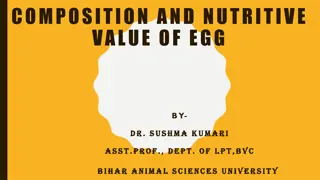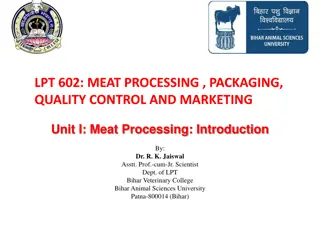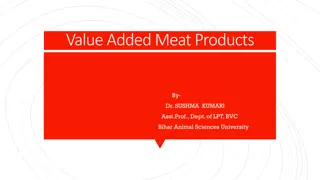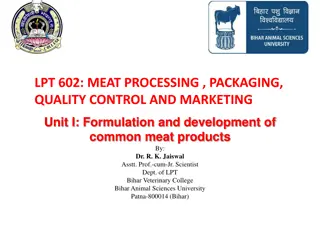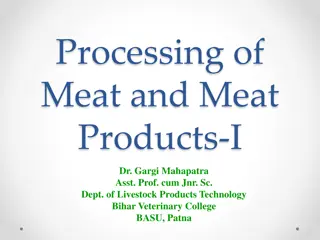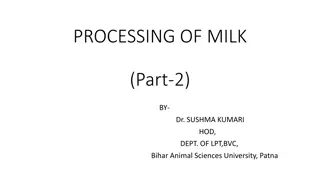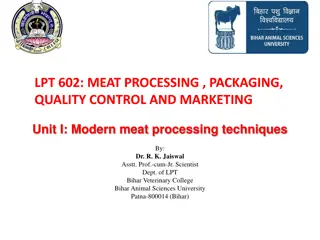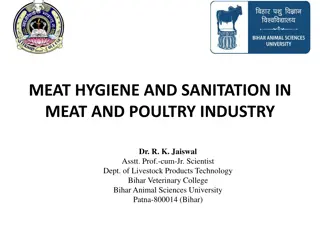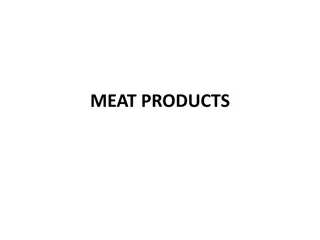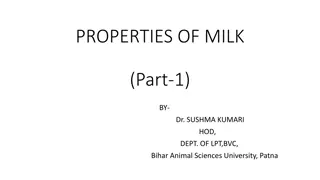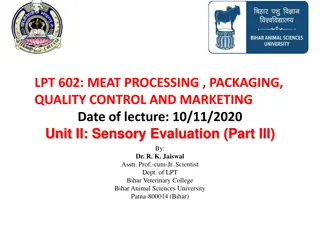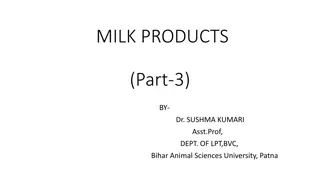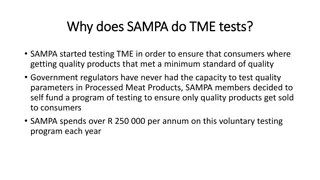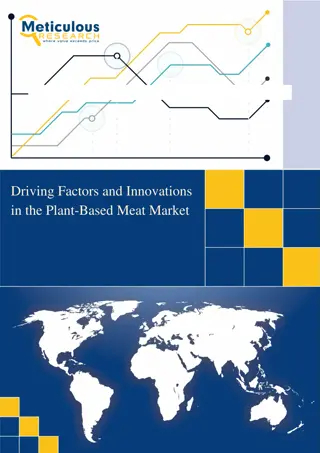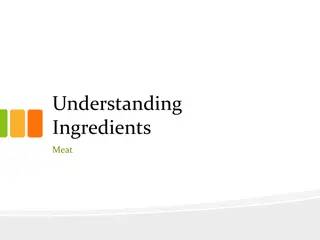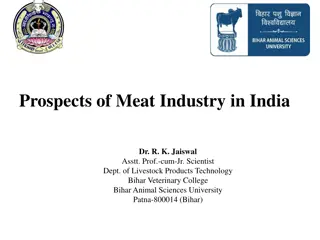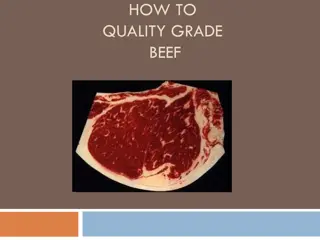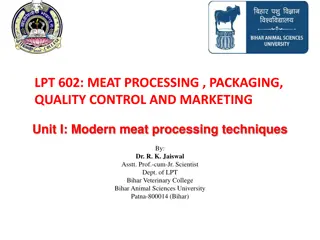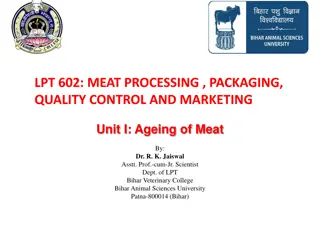Quality Evaluation of Meat Products by Dr. Sushma Kumari: A Comprehensive Overview
Explore the intricate details of evaluating the quality of meat products in the field of Meat Science. From physico-chemical properties to microbiological qualities and sensory evaluation, this presentation covers essential aspects such as pH, emulsion stability, spoilage identification, and sensory assessment for new product development and quality analysis.
Download Presentation

Please find below an Image/Link to download the presentation.
The content on the website is provided AS IS for your information and personal use only. It may not be sold, licensed, or shared on other websites without obtaining consent from the author.If you encounter any issues during the download, it is possible that the publisher has removed the file from their server.
You are allowed to download the files provided on this website for personal or commercial use, subject to the condition that they are used lawfully. All files are the property of their respective owners.
The content on the website is provided AS IS for your information and personal use only. It may not be sold, licensed, or shared on other websites without obtaining consent from the author.
E N D
Presentation Transcript
Quality Evaluation of Meat Products Meat Science (LPT-321) By- Dr. Sushma Kumari Asst. Prof., Dept. of LPT, BVC Bihar Animal Sciences University
Physico-chemical and microbiological quality of meat and their products Physico-chemical qualities- 1.pH 2. Emulsion stability 3. Water Holding Capacity (WHC) 4.Cooking Yield (CY) 5.Shear Force Value
Microbiological Qualities 1. SPC 2. Coliform count 3. Yeast and Molds count Phases of growth of micro-organisms in meat- A. Lag phase B. Log phase C. Stationary phase D. Decline or death phase
Identification of meat spoilage 1. By physical observation on deteriorative changes in meat- Discoloration, slime formation, stickiness , whiskers etc. 2. Off flavour- 3. Extract release volume 4. Dye reduction test 5. Increase pH, WHC, Microbial count 6. High TBA and peroxide value.
Eating Quality of meat 1. Appearance and colour 2. Flavour 3. Texture and Tenderness 4. Juiciness
Basics of sensory evaluation of meat products Sensory evaluation refers to the scientific assessment through the use of human senses. It is essential for- 1. new product development 2. analysis of competitive products 3. product quality and shelf life assessment 4. Assessment of acceptability for consumers and marketing
Tips for Good Sensory Evaluation Tips for Good sensory evaluation



